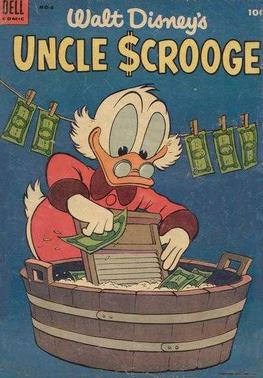**This is an old revision of the document!**
Table of Contents
CMC $$$ !!!
Gifts and commodities
Ryan Schram
Mills 169 (A26)
ryan.schram@sydney.edu.au
Monday, August 10, 2015
Available at http://anthro.rschram.org/1002/3.1
The best of all possible worlds
https://www.youtube.com/watch?v=Vmc72fCJivA
https://www.youtube.com/watch?v=TlIUXvAdpcw
“The Best of All Possible Worlds” from Candide by Leonard Bernstein (1956), based on Voltaire's novella.
Two traps
- The trap of nostalgia: Cultures are dying.
- The trap of modernism: Everything is getting better.
Positive thinking
Positive thinking has deep roots in Western culture, going back to the Enlightenment:
- There is a reason for all of this.
- Everything is getting better.
Yet there has also been a critical tradition in Western culture which has been skeptical of this.
Voltaire's Candide and Doctor Pangloss
Doctor Pangloss believes:
- There is no effect without a cause, and
- All is for the best in, this, the best of all possible worlds.
For Doctor Pangloss, there is no other way that things could turn out
- “Legs are visibly designed for stockings–and we have stockings.”
- “Pigs were made to be eaten–therefore we eat pork…”
Uncle Scrooge in the Land of Tralla La
Noble yet innocent
Noble yet innocent
Gifts have spirit
For Mauss, the Maori word hau means the “spirit of the thing given.” When someone gives a gift, they give part of themselves. “The hau wishes to return to its birthplace” (Mauss 2000 [1925]: 12).
What if...?
What if we lived in a world in which everything was a gift, and everything possessed a hau?
Spheres of exchange
Many societies organize objects into distinct, ranked spheres of exchange
- Women as wives
- Prestige items: brass rods, tugudu cloth, slaves
- Subsistence items: food, utensils, chickens, tools
Some things, like land, cannot be exchanged for anything, but are inherited.
Two points about spheres
- In spite of predictions to the contrary, money does not collapse all spheres into one market. Often money exchanges are placed in their own sphere.
- Western and “modern” societies think of themselves as being dominated by money, but if you think about it, these societies have spheres of exchange too, and worry about maintaining the boundaries between spheres.
Ongka redux
- Has a bank account
- Grows coffee
- He has also said that cash-cropping and moka should coexist (Strathern and Stewart 2004, 133).
Commodities and capitalism
- Commodities are bought and sold for a price.
- You can think of commodities as a “sphere of exchange.” When you exchange commodities for money, and back again, you are following certain rules.
- The sale of commodities generates a profit.
- A system of producing, selling and distributing commodities as the main form of economic system is associated with capitalism.
Capitalism is
- Capitalism is a system in which the means of production are privately owned by one social class.
- Capitalism is a system in which nobody else has access to the means of production; in order to live, people have to sell their labor.
Talk about selling out
A worker under capitalism brings “his own hide to market and has nothing to expect but – a hiding” (Marx 1867, chap. 6).
What do you think he means by this? Buzz about this. What do you associate with the word Capitalism? Marxism? When did you first hear these words? Have you ever read the Communist Manifesto?
Money and profits
Let C represent a good, e.g. boots, cell phone, gum.
Let M represent money.
- C - M - C' The simple exchange of goods.
- M - C - M' The making of profit through the exchange of commodities.
Marx wants to know why society moved from #1 to #2.
Marxist analysis is about finding contradictions
- It was the best of times, it was the worst of times.
- Never before can we feed so many, and never before have so many people been without food.
- Everyone in Australia can afford “fast fashion,” but people in Bangladesh work themselves to death for minimal wages.
- Social systems and the global systems are defined by their contradictions. They contain an ongoing struggle of life and death.
What's next
- We continue to explore Marx's concept of commodities.
- The fetishism of commodities
- The commodification of everything
- We are spending a lot of time on commodities because
- The global economic system is capitalist system.
- Hence, the kinds of conflicts and confrontations we are studying are all examples of when a gift system meets a commodity system.
If you would like to learn more about Marxism, visit: http://marxists.org/ for online editions of the Manifesto, Capital, and other key writings of Marx and Engels.
References
Andrae, Thomas. 2013. “Barks, Carl.” In Icons of the American Comic Book: From Captain America to Wonder Woman, volume 1, Duncan, Randy, and Matthew J. Smith, eds. Santa Barbara, Calif.: ABC-CLIO.
Bohannan, Paul. 1955. “Some Principles of Exchange and Investment among the Tiv.” American Anthropologist, New Series, 57 (1): 60–70.
Marx, Karl. 1867. “Chapter Six: The Buying and Selling of Labor-Power.” Capital, vol 1. https://www.marxists.org/archive/marx/works/1867-c1/ch06.htm
Mauss, Marcel. 2000 [1925]. The Gift: The Form and Reason for Exchange in Archaic Societies. Translated by W. D. Halls. New York: W. W. Norton & Company.
Strathern, Andrew, and Pamela Stewart. 2004. Empowering the Past, Confronting the Future: The Duna People of Papua New Guinea. Basingstoke, Eng.: Palgrave Macmillan.
Voltaire. 2006 [1759]. Candide. Project Gutenberg. http://www.gutenberg.org/files/19942/19942-h/19942-h.htm.


